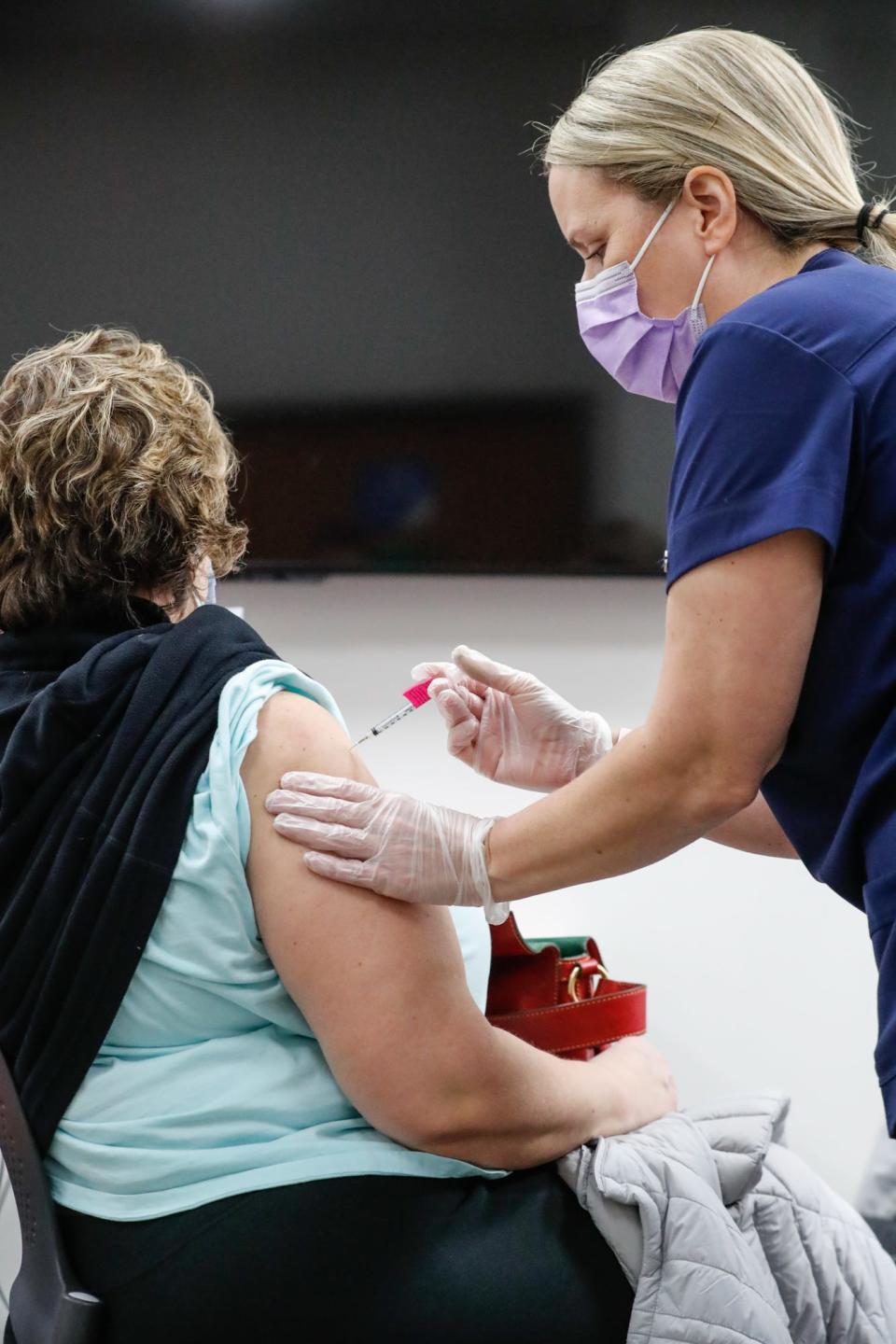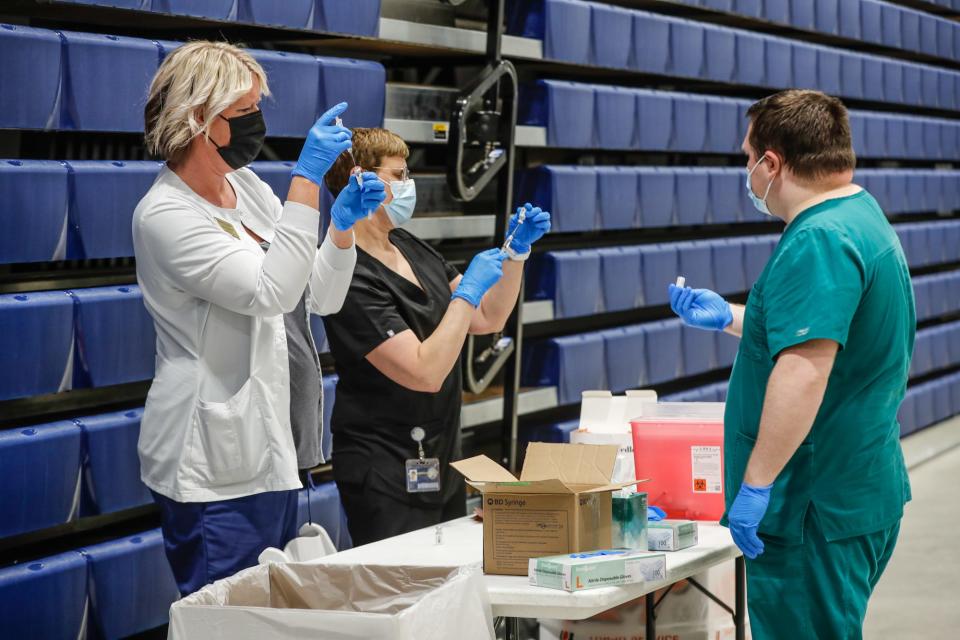Op/Ed: Indiana leading efforts to address nursing shortage through policy, education
Indiana is admired for many things: our legendary hospitality, basketball prowess, the Indianapolis 500 –– and, now, our leadership in nursing.
The United States was starting to experience a national nursing shortage even before the COVID-19 pandemic pushed our health care system to the brink. Ensuring a healthy pipeline of nurses will require our leaders to think bigger than the current gaps in the workforce; they will also need to anticipate how enrollment, financial and capacity challenges in nursing education will impact the country in the future if left unaddressed.
More:'Everyone is so tired': Inside IU Health Methodist as it is overwhelmed by COVID patients
Over the past few months, Indiana has taken bold steps to address the nursing shortage head on. While the rest of the country looks to us for our leadership in this area, we must continue pushing forward with new ideas to strengthen the nursing pipeline.

There is an urgent need across our state ― and the country ― to recruit more nurses. Skyrocketing demand for care has collided with many nurses leaving their jobs or the profession altogether. More than one-fifth of nurses plan to retire in the next five years. Meanwhile, the federal government projects that an additional 275,000 nurses will need to join the workforce by 2030 in order to prevent a significant workforce shortfall.
More:'A vicious cycle': COVID-19, workforce shortage puts further pressure on nurses
Today’s nursing workforce crisis is just the tip of the iceberg. The people you see in scrubs have made it a long way to serve you. From countless hours in the classroom to compassionate care during clinicals, and from practical nursing certifications and associate degrees all the way to Ph.D.s and DNPs, the nursing pipeline is long. Unfortunately, there are several areas of the pipeline that are at risk of hampering our response to the nursing shortage. Some schools are struggling to recruit new students, while others are turning away thousands of qualified applications due to a lack of nurse educators, lab space and clinical sites.
With the passage of the Nursing Indiana Back to Health law in March, lawmakers took a major step to strengthen the state’s nursing pipeline. The law empowers nursing programs to increase the number of qualified students they can enroll. It also removes certain barriers on faculty requirements, which allows more nurses to teach, and permits nursing programs to engage students with more simulations to complement their clinical hours.

Legislators have done their part; now nursing schools are doing ours. To help close the gap in Indiana, many institutions are working to enroll more students. As schools create more openings, we can provide greater opportunity for students from different backgrounds to apply, increasing enrollment and advancing diversity, equity and inclusion in the process.
Retaining students is key, which is why retention specialists are vital. These professionals work closely with students after they are admitted to help address areas they find particularly challenging. Because finances can be a barrier for many students, some nursing programs engage in partnerships with affiliates that provide cost-of-living stipends and financial aid for tuition, books and supplies. As graduates progress in their nursing careers, they have the opportunity to work toward an eventual goal of teaching nursing through innovative programs. For example, one program in Sellersburg enables nurses with an interest in teaching nursing to work in simulation labs where they play a role in training students. The program empowers them to teach as they rise up the degree ladder. Moreover, programs in Terre Haute and Indianapolis have clinical partnerships with high-need hospitals, in which nurse apprentices may be offered full-time positions once they pass their licensing exams.
Indiana should serve as a national model for how to address the nursing workforce shortage. Across the country, policymakers and academic leaders can adapt Indiana’s best practices to meet the needs of their state. As we continue to lead in nursing education, Hoosiers must further invest in new infrastructure, add more computer labs, attract new nursing faculty and expand wraparound support services, some of which are currently funded by grants that are scheduled to run out next year. And while face-to-face clinical hours are invaluable, enabling schools to expand high-quality simulation will go a long way toward helping students pass their licensing exams and prepare to enter the workforce.
Early in my career, I remember complaining to a colleague about a challenge I was facing. I’ll never forget the wise words she told me: if you’re not part of the solution, you’re part of the problem. I’m proud to live in a state that is part of the solution, and I’m hopeful that our efforts today will lead to a stronger, healthier Indiana.
Dr. Jewel Diller is assistant vice president for nursing at Ivy Tech Community College.
This article originally appeared on Indianapolis Star: Indiana serves as nationwide model to address current nursing shortage

